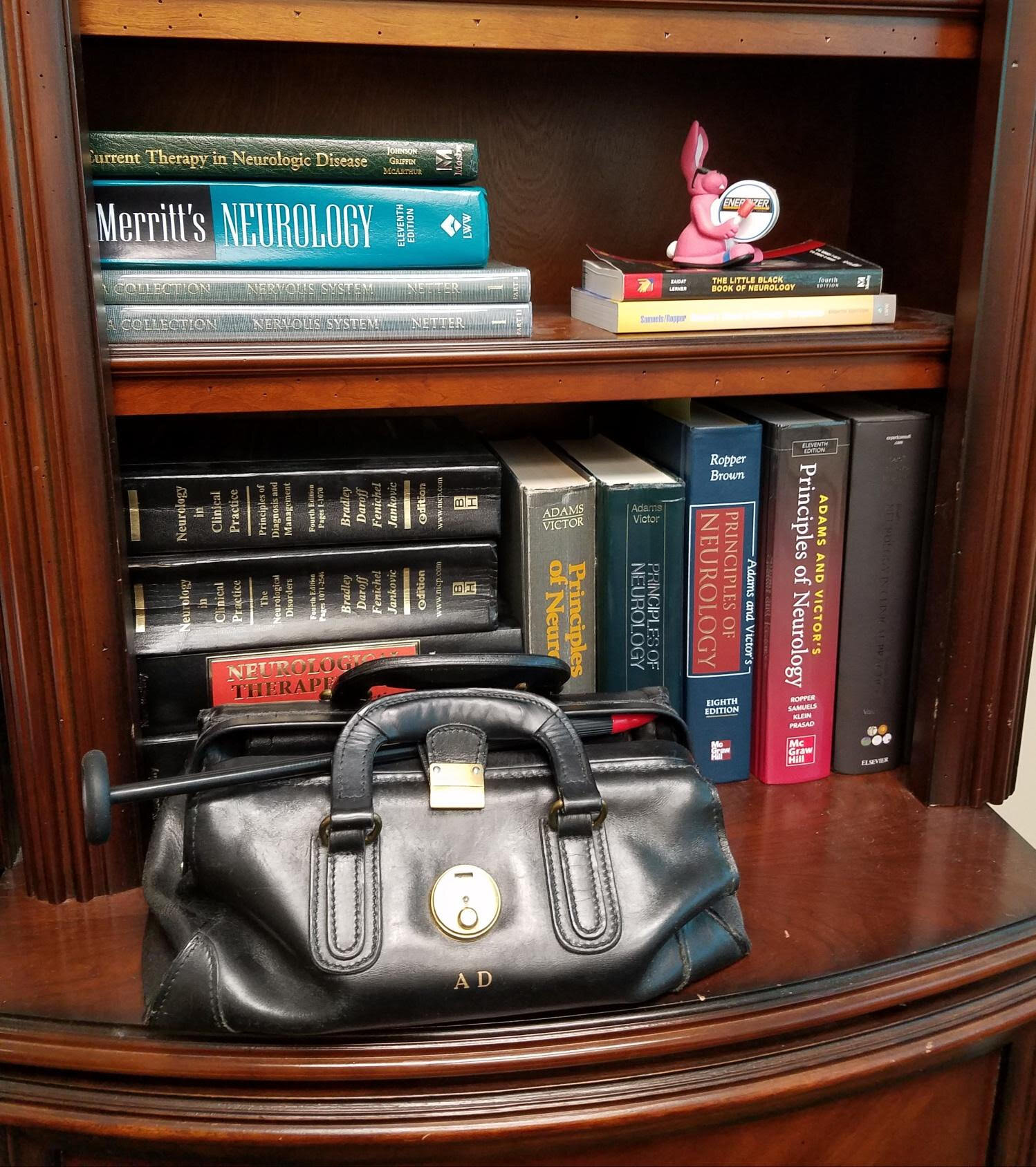My Black Bag
I like to tell patients who admire my doctor’s bag in my exam room that the reason I chose neurology was so I could carry the black bag! Neurologists are among the few physicians who still carry a doctor’s bag. We need it because we have a lot of tools for the neurological exam. I was given my bag by my mother and our next door neighbor a few months before I graduated from medical school in 1992 because our neighbor had AIDS, and he new he would not live to attend my graduation. This bag is a cherished possession and has become a part of me with the handle curved to fit my hand.
My bag contains my stethoscope, my Welch Allyn ophthalmoscope/otoscope kit that I bought in my first year of medical school in 1988 (still works well), a near card for testing vision, tuning forks of various frequencies to test things like hearing and vibratory sensation, tongue blades, wooden cotton swabs for testing for the Babinski reflex, my Queen Square reflex hammer, a bottle of vanilla for testing smell, my Boston naming cards for testing language, and a key for testing stereognosis (the ability to recognize something held in the hand without seeing it). By the way, the tongue blade is not used by a neurologist for checking for strep throat; it is used to test the gag reflex. However, I almost never test that, but rather use it occasionally as a shoehorn when a patient needs help getting their shoes back on.
Neurologists do not use tomahawk reflex hammers that you may see at your primary care physician’s office. We use heavier hammers that do a better job at getting your reflexes. I use a hammer called a Queen Square hammer developed at a neurological institute in London which is also more flexible. It looks intimidating because it has a long handle and a heavy rubber head on the end. But it really doesn’t hurt!
Generally the neurological exam is not painful. Sometimes when I can tell a patient is very sensitive or in pain, I will perform the exam more gently and use less force with reflex and motor testing and say, “Don’t let me hurt you” or “Tell me if I am hurting you.”
